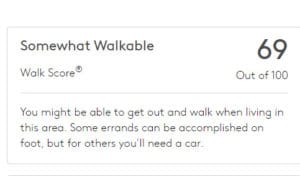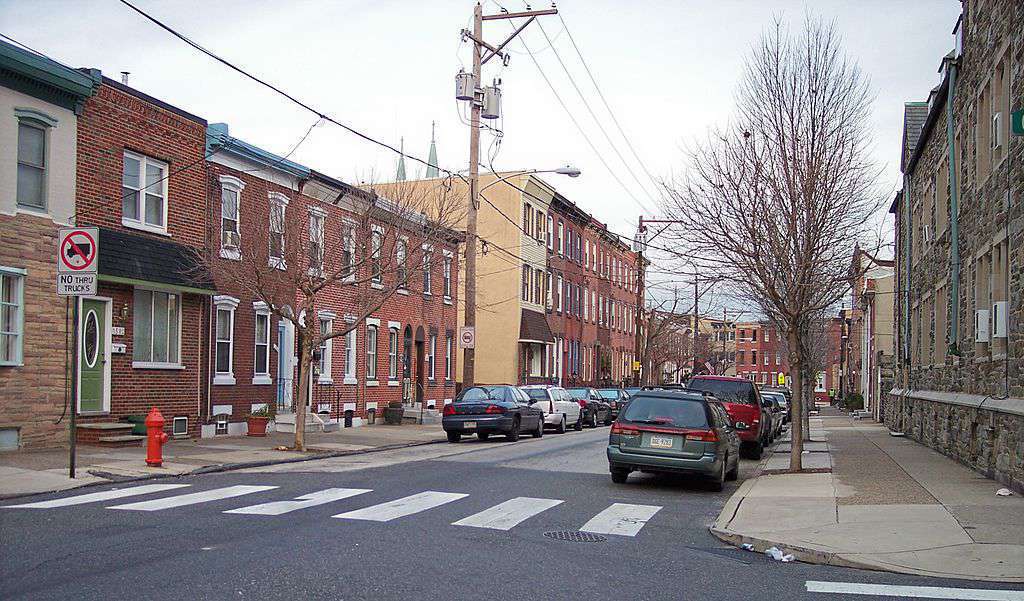So what is a Walk Score? Why is it important?
If you are asking these questions, you have probably heard something about a walk score, seen it on a real estate listing, or think you know what it is but aren’t quite sure. Fortunately, you’ve come to the right place.
Many people want to be able to walk from their apartment or home to shops, grocery stores, food places, and activities. It’s more convenient and quicker than getting in your car. It’s also good exercise. But how do you measure how walkable a neighborhood or area is?
Invention: Walk Score
Enter the “Walk Score”.
Back in 2007, two former tech gurus were thinking the same thing and founded a company called “Walk Score” in Seattle, Washington. The company which is now owned by Redfin and the metric it created (walk score)Â has become the ubiquitous #1 standard for measuring walkability.
So What is a Walk Score?
A Walk score is exactly what it sounds like, a single score you can use to assess just how walkable a particular location, neighborhood, or city is. If you are wondering which area is more walkable, you can compare their walk scores.
Example of a Walk Score:
245 East 40th Street
Walker’s Paradise
How does Walk Score Work?
Software Magic. The company uses a patented algorithm that measures the distance to various amenities (the closer the better). It also looks at things like block length, intersection difficulties, and so on. This results in a single, standardized Walk Score that can be used for comparison purposes.
Where do I find a Walk score?
This score now appears on the Walk Score website and 30,000 other sites including Apartments.com, Zillow, Redfin, Zumper, and more.
What is a Good Walk Score?
A Walk Score of:
90-100 is the highest. This is what they call a walker’s paradise; a place where daily errands do not require a car.
70-89 is very walkable. Most errands can be accomplished on foot.
50-69 is somewhat walkable. Some errands can be accomplished on foot.
25-49 is car-dependent. Most errands require a car to complete.
0-24 is also car-dependent. Almost all errands require a car to complete.
Walkability: Urban vs Suburb
With all this in mind, it is easy to see why urban areas are considered more walkable and therefore have better, higher walkability scores than suburban areas.

Think about it this way: whether someone is in a wheelchair, biking or rollerblading to a grocery store 3 blocks from their homes, they should all have the ability to travel on the same streets without issue. Rocks and potholes shouldn’t create uneven terrain to cross. The crosswalks should also have signs that let them know how much time remains for them to safely cross the street.
When these factors exist harmoniously in one neighborhood, the walkability score soars!
This also helps residents feel a connection to their community because they can easily travel without taking a car or even public transit to get to their destination.
Finding Your City’s Walk Score
You can get a walk score for your address, your neighborhood, or even city.
Currently, the number #1 city for Walk Score in the United States is San Francisco, CA (Walk score 88.7), followed by #2 New York, NY (88.0) Jersey City, NJ (86.6), Boston, MA (82.8), Chicago, ILÂ (77.2), Washington D.C. (76.7), Miami, FL (76.6), Newark, NJ (75.9), Oakland, CA (75.3), Philadelphia, PA (74.8).
Consider walk scores in your next search for a home. Take it into context as well as it’s just one algorithm’s opinion. Make sure the location still meets your needs, is affordable, and well-located.






